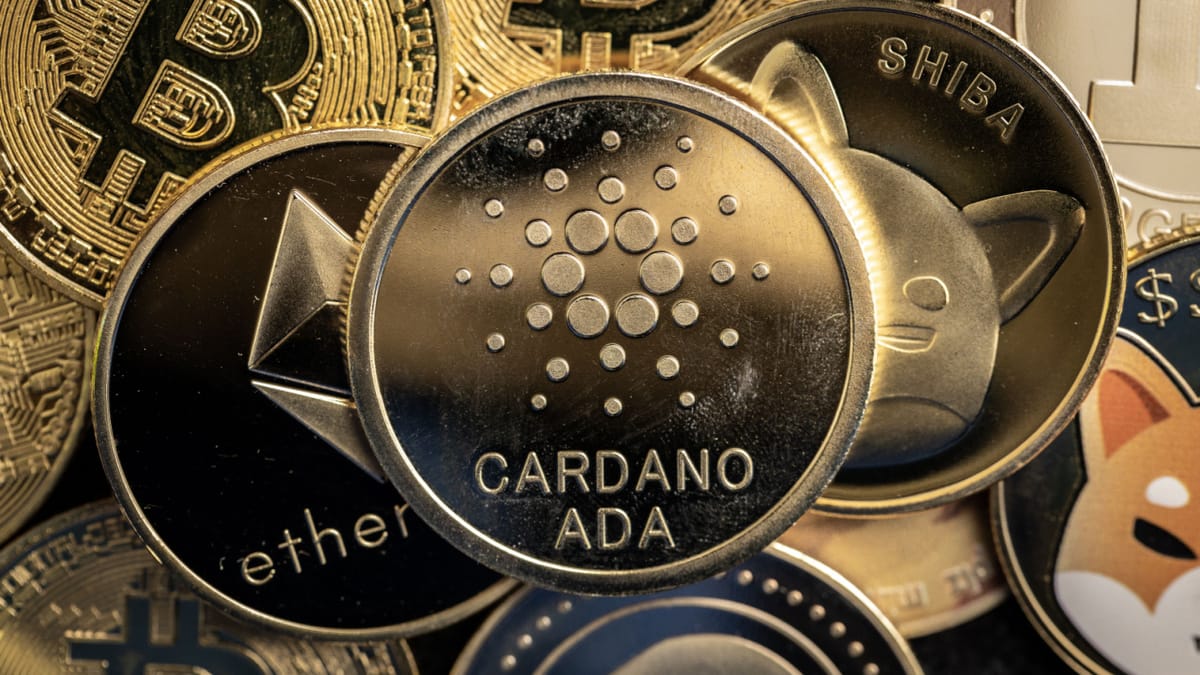What is an Initial Coin Offering (ICO) in Crypto?

Traditional companies usually raise money through fundraising from venture capitalists and initial public offerings (IPOs). So, what does ICO stand for? In the world of crypto and blockchain technology startups, this is usually done through an initial coin offering (ICO).
An initial coin offering applies a crowdfunding approach to fundraising, where the blockchain or crypto company issues native tokens of its project to early investors in exchange for more notable crypto like ETH.
In this guide, we will explore the world of ICOs to give you a better understanding of how they work.
Key Takeaway: What is an ICO?
Here are the key things to know about what is an ICO in cryptocurrency:
- The key objective of an ICO is simply to raise money for a new blockchain project by selling crypto tokens. Typical venture investors may shy away from taking the risk of investing in such projects, so crypto companies raise funds instead via the public
- Aside from raising funds, ICOs are also intended to help cultivate an early community of believers in the project and its native token.
- Unlike IPOs, it is important to note that initial coin offerings are not regulated, so there is a high risk associated with investing in one.
- It is important to note that you will likely need to have some crypto already to participate in an ICO. Most only accept cryptos like Bitcoin, Ethereum or, stablecoins like USDT.
- Finally, more so than with traditional investment, you will need to research the ICO, its founders, and its future utility to make sure that you are fully aware of what you are investing in.
How to Participate in an ICO
Now that we have briefly answered the question of how does initial coin offering works, let’s take a look at how to participate in one.
Step 1: Find and research an ICO
To participate in an ICO the first step is to find one. Check out our guides to the best ICOs to buy in 2024. You can also look for them in ICO calendars like on CoinMarketCap or similar reputable sources.
Once you find a promising ICO, you need to research it thoroughly, look into the team behind it, read the project whitepaper, and see what others are saying about it on social media. Ultimately, you want to leave no stone unturned and feel extremely confident before investing.
Step 2: Ensure you have crypto in a wallet
To invest, you will need to ensure you have a crypto wallet and the right crypto required for participation. This will likely be ETH, BTC, SOL, or USDT and similar stablecoins.
If you don’t hold any of these, you will be able to buy them through your centralized or non-custodian wallet.
Step 3: Invest and receive your ICO tokens
Now you have the necessary crypto, you will be able to invest in the ICO. Once you do, you will receive the token so usually after the ICO has concluded, which can then be held in your wallet or traded on exchanges.
How to Prepare to Launch an ICO
Should you want to create your own ICO but are unsure how to launch an initial coin offering, there are some key steps you need to follow and points you need to consider.
Build a Credible Team
First and foremost, you need to have a reputable team working with you on the project. Investors will be looking into the founding team, any notable achievements members may have, and also potential red flags. As such, it is important to ensure that the people you choose to start the project with have a strong background in crypto and a proven track record.
Develop Tokenomics
Secondly, it is vital to ensure that the tokenomics of the project are appealing to investors and clear-cut. You will need to consider the total supply and the percentage allocation to various aspects of the project. For example, how much will be allocated to a potential airdrop, marketing, listing on exchanges, and even staking rewards.
Ensure that there is a detailed plan of action so that investors can get excited about the token.
Create Marketing Buzz
In terms of excitement, this is the most important part of launching an ICO. Recently, many ICOs have been meme coins that have little to no utility but have a strong community. Similar to Bonk and Pepe, which both have established strong social media followings, this cult following has helped their respective prices surge by over 10,000% since launching. For more traditional projects, the community is usually built around token utility or staking.
Types of ICO Token Sales: 6 Different Models
It is important to note that there are a variety of different models of initial coin offerings.
Dutch Auctions
A popular option is a Dutch auction which the auctioneer normally starts with a high asking price and then progressively reduces until parties are willing to accept a lower price. As such, it is also known as a descending price auction, and the company typically allows the market to dictate the price. The starting point of the auction comes after all bids are in, then sorted from highest to lowest.
Pros
- Helps establish a high entry point
- ICO token sales could be raised faster
Cons
- May see a lower quantity of initial participants
Reverse Dutch Auctions
On the opposite side is a reverse Dutch auction; here, the price of the tokens is established following the sale and gradually increases over time. This model is great for ICO projects that encourage investor FOMO (fear of missing out).
Pros
- Increases buyer urgency
- Higher amounts of participating investors
Cons
- Larger amounts of tokens distributed
Fair Launches
Away from the auctioneering approach is a fair launch, where all participants can buy all available tokens at the same price. There is no favoritism in this stage, with all investors given a fair chance to own the token.
Pros
- No favoritism among investors
- Anyone can participate
Cons
- Lack of initial funding
- Slow to build investor appetite
Collect and Return
In a collect and returns model, there is a predetermined contribution amount, however, with the use of a smart contract, the contributions can exceed the initial agreed amount. Following the conclusion of the sale, all contributions raised are adjusted, with tokens distributed to investors. Any difference between the initial target and the raised amount is then returned to participants.
Pros
- Fixed limits
- Distributions are already pre-determined
Cons
- Does not accept any excess funding
Dynamic Ceiling
The dynamic ceiling blends the above models. It operates in set intervals with mini hard caps present at each stage. Investors can only deposit to the set limit, with any transactions above this being rejected. This ultimately means to invest beyond the ceiling, you will need to make multiple transactions.
Pros
- The number of individual investments will be high
- Multiple entry points for investors
Cons
- Investments cannot go beyond the cap
Uncapped Auctions
Lastly, an uncapped model enables the investor to exchange either crypto or FIAT currencies for the ICO token at a fixed price. The rate will likely be more favorable for earlier transactions and less so for those who invest later down the line.
Pros
- Increased investments at the earlier stage
- Different ways of funding
Cons
- Skewed to benefit early-investors
Examples of ICO Successes
You now have a better answer to the question of what does ICO stand for, so let’s now go through some examples of successful ICO projects to give you an idea of how they look in practice.
- Ethereum – Is easily the most notable example of a successful ICO. It raised $18 million during its ICO in 2014, going on to become the world’s second-largest crypto a decade later with a market capitalization of over $400 billion.
- Cardano – During its 2017 ICO, Cardano raised $62 million, wooing investors with its focus on sustainability and academic research. Many continue to be optimistic about its future.
- Chainlink – Next, we have Chainlink; its native token, LINK, was born after raising $32 million in a 2017 ICO. The attraction of Chainlink was its focus on connecting smart contracts to real-world data.
- Binance Coin – Seen by many as the world’s largest centralized exchange (CEX), Binance reportedly raised $15 million in an ICO to create BNB coin. Its native token at the time was used to pay fees on the exchange.
- Green Bitcoin – Is a new eco-friendly cryptocurrency, and has already raised nearly $2 million during its ICO. This project has a total supply of 21 million tokens.
What Are the Risks of Investing in ICOs?
Many crypto traders look to ICOs as a chance to get into high-potential projects early, but there is also risk associated with investing in ICOs.
There are various risks of investing in any financial instrument. However, these risks tend to be greater when it comes to cryptocurrencies due to their volatility and the industry’s lack of regulation. Here are some of the main risks.
Scam projects
Falling victim to a fraudulent ICO is a big fear of many investors due to the high number of them over the years. Whether a pump and dump or rug pull, projects sell the idea of groundbreaking new crypto, only for this project to never see the light of day. A famous example was Bitconnet, which ran a $3.45 billion Ponzi scheme according to Yahoo Finance.
High market volatility
ICOs are extremely volatile and typically experience big swings in price soon after launching. The price of digital assets can surge and remain high, as seen with Ethereum. However, some may fall and are never able to mount a comeback.
No regulation
There is no regulation in the ICO market and no oversight or authority in place to ensure that projects are operating ethically. So you must ensure that you do your research, as there will be no fallback option should things go wrong.
ICOs vs Other Fundraising Methods
An ICO isn’t the only way crypto projects can raise funds – here are other key methods.
Initial Exchange Offerings (IEOs)
An initial exchange offering enables blockchain-based startups to raise money by directly on a centralized exchange (CEX). The token will have the benefit of being launched on an existing platform, giving it immediate access to market volume. The project will first need to create a listing proposal; if accepted, the CEX will conduct the token sale.
IEOs are typically hyped to create a buying buzz as soon as the coin launches.
Pros
- Increased security for investors
- Higher amounts of liquidity
- Easy to set up and launch
Cons
- The project will pay a high listing fee
- Prices are typically very volatile immediately following IEOs
Security Token Offerings (STOs)
A security token offering, or STO, is a more secure way for blockchain startups to raise capital. Unlike unregulated ICOs, STOs are security tokens that have been issued and represent ownership of a digital and real-world asset. Depending on the jurisdiction the tokens have been issued, they will comply with the securities laws of this region.
Pros
- Increased market liquidity
- Involves tangible assets
- All investments are regulated
Cons
- Higher risk of governance
- Potential for fraud
Initial DEX Offerings (IDOs)
Initial DEX Offerings have one distinct difference from ICOs or IEOs, and that is no centralized operator is managing the fundraising process. IDOs enable the crypto project to list its token sale on the decentralized platform. Once listed, investors can buy these tokens, with the DEX distributing them to the buyer using a smart contract.
Pros
- No centralized control
- Immediate access to liquidity
- Easy and accessible to everyone
Cons
- No regulatory oversight
- Higher risk of unvetted projects
Conclusion
After reading this guide you should comfortably be able to answer the question “what is an ico crypto”, and understand both its pros and cons. There are benefits to ICOs for both investors and the project. Investors have the opportunity to vet and be early participants in potentially game-changing projects, whilst startups can raise money and build a community of believers.
Despite the significant risks of being early, investing in an ICO like Ethereum could be potentially life-changing. Ensure you do your due diligence before deciding to participate in any crypto fundraising rounds.
FAQs
What is an ICO in simple terms?
Simply put, an ICO or initial coin offering is a funding mechanism for blockchain startups. This involves offering tokens to early investors for an often predetermined price.
What is an example of an ICO?
Ethereum is the best-known ICO;, it raised $18 million in 2014, going on to become the world’s second-largest cryptocurrency.
What is the purpose of an ICO?
The purpose of an initial coin offering or ICO is to raise money to build or scale a crypto or blockchain project.
How do I make my own ICO?
You will need to build a credible team, devise the tokenomics of the project, and create a community of believers and early adopters.
References
- IPOs set for record year (CNBC)
- Coinmarketcap ICO calendar (Coinmarketcap)
- What investors are looking for in tokenomics (Nasdaq)
- Bonk and Pepe lead crypto rallies (Decrypt)
- Bitcoin FOMO has returned (Coindesk)
- Binance allegedly raised $5 million, not $15 million in ICO (Yahoo Finance)
- What is a token versus a security (Bloomberg)
- Top ICO scams of all-time (Yahoo News)


 Connor Brooke
Connor Brooke 

 Nick Pappas
Nick Pappas 